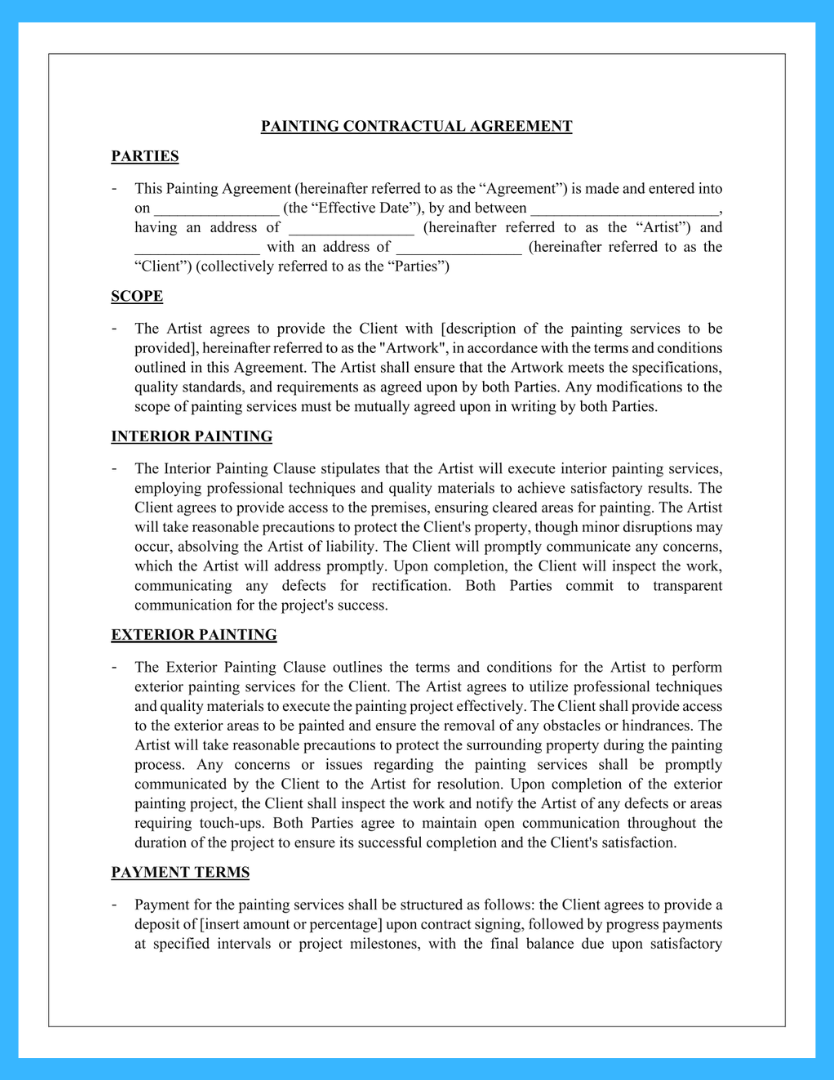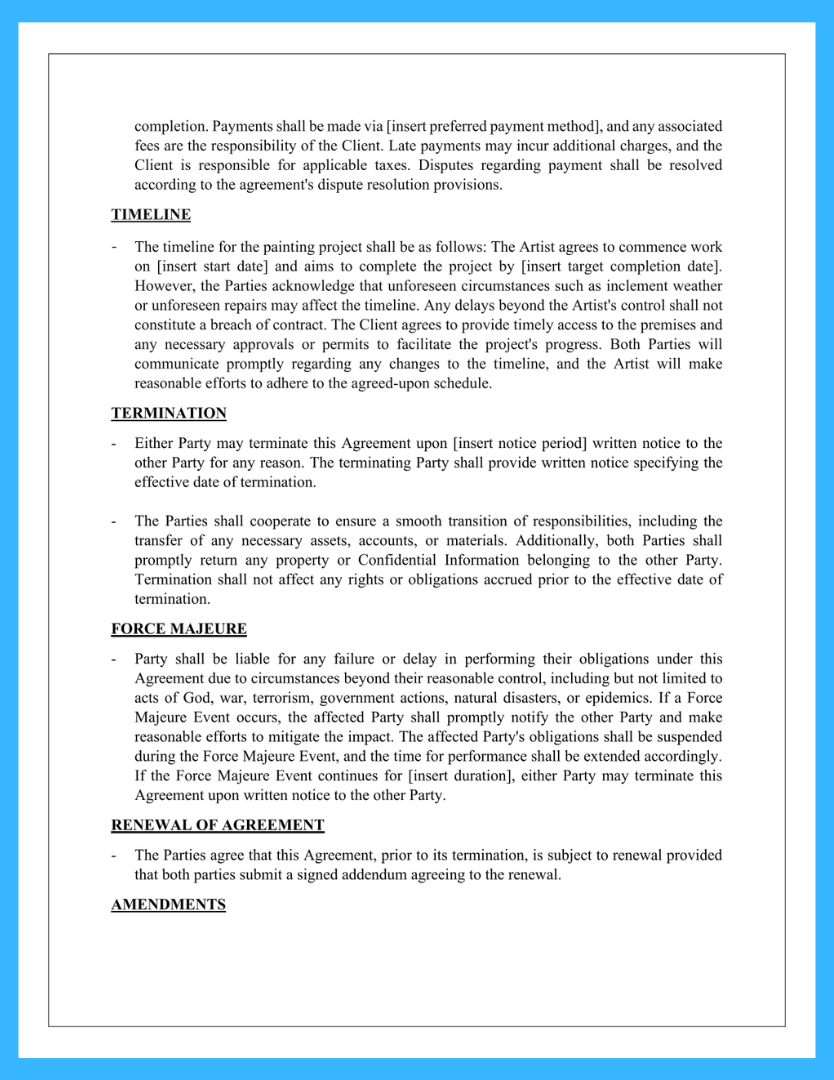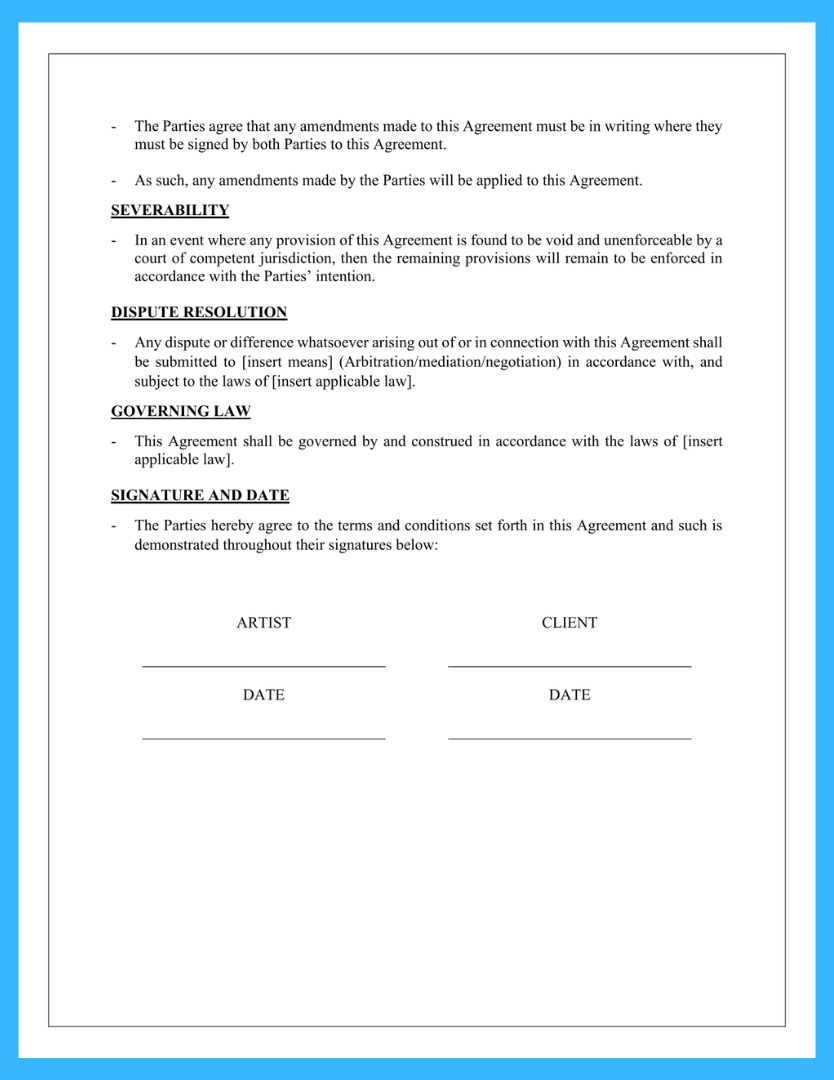
A painting contract formally outlines the agreement between a client and painter, establishing details like scope, timeline, materials, and payment to set clear expectations.



A painting contract is a legally binding agreement between a client and a painting contractor or company before work begins. It outlines the full scope of work, timeline, materials to be used, payment schedule and terms, and other crucial details to formalize the relationship and provide legal recourse if either party reneges on their duties.
Specifically, a thorough painting contract template will clearly define the surfaces and areas to be painted, establish start and end dates, list all painting products and tools required, set client payment amounts and installments, explain site access and preparation requirements, outline safety procedures, specify cleanup and waste disposal processes, establish quality assurance standards, detail dispute resolution methods, and include other relevant clauses to ensure success.
While a formal painting contract is not always required for small jobs, clearly outlining expectations, procedures, timelines, and legal recourse is highly recommended. For more extensive interior or exterior painting projects, painting agreements become essential to establish formal parameters between the client and contractor before work begins. A painting contract protects both parties if disagreements arise regarding scope, quality, payment, or other issues.
Good practice suggests that any painting job expected to require more than three days of active work onsite warrants the accountability and clarity provided by a signed painting agreement. Large-scale painting during new construction or significant home renovations certainly calls for an air-tight contract. Specialized techniques like faux painting, artistic murals, or intricate details should always accompany a formal legal document to motivate the highest quality execution and enable conflict resolution as needed.
A painting contract template is strongly recommended for more extensive interior or exterior painting jobs to formally outline the full scope and expectations between both parties. Small one-day painting jobs may not require an official contract. However, anything more substantial warrants the extra protection and accountability a painting agreement provides.
Good examples of when a painting contract becomes essential include new construction painting where rooms or buildings require multiple coats, large home interior painting involving prepping and painting several rooms, commercial painting jobs in offices or retail spaces, specialized techniques like faux finishes or intricate detailing, and exterior house painting requiring significant scaffolding and effort.
In all these painting project examples and more, dedicating time upfront to finalize a detailed painting contract ultimately saves time, money, and headaches if disputes arise regarding payment, quality, timeline, or other issues.
Specific scenarios where a contract is strongly advised include:
No matter the specifics of the painting project, scope, or budget, taking the extra step to sign a formal agreement helps align expectations, ensure accountability, and provide legal recourse if significant issues potentially emerge.
Download Signaturely’s free painting contract template today to quickly create a custom agreement tailored to your interior or exterior painting job.
A comprehensive painting contract establishes expectations between the client and contractor by outlining crucial legal, procedural, and practical details. While no two painting jobs are identical, most quality painting agreements include sections on the following core elements:
This section names the client and contractor involved, including full legal names, addresses, and contact information. Establishing all parties’ exact identities and roles is essential for legal clarity.
The scope of work segment provides a detailed description of the location, surfaces, and elements to be painted. It may specify interior walls and trim in certain rooms, exterior surfaces like siding or decking, or touch-ups to existing finishes. Outlining the painting scope upfront prevents misunderstandings later regarding what is included or not.
A good painting business contract estimates all materials needed for proper surface preparation and painting, including primers, paints, brushes, scaffolding, drop cloths, and any specialized products. Detailing these materials holds the painter accountable for quality work.
The labor estimate outlines the painting contractor’s fees for their work, often broken down by prep time vs. active painting time per day and total project duration. Detailing labor costs holds both parties accountable once signed.
This section notes all costs like materials, labor, taxes, insurance, and profit margin to provide a total project price. It also establishes payment terms such as deposits and installment payments tied to project milestones. Clear payment terms prevent misunderstandings later.
Identifying the exact location where painting services will take place is a critical legal element, especially for exterior painting. It also ensures the independent contractor accurately scopes needed work like scaffolding and equipment access. Pinpointing the job site upfront leaves no room for doubt about where the entire agreement applies.
This section explains how the contract may be amended if the project scope or timeline needs adjustment. It also covers conditions allowing either party to terminate the agreement if necessitated by extenuating circumstances. Outlining modification and termination protocols prevents confusion later.
General terms establish crucial legal clauses like requiring written change orders, waiving certain damages, dispute resolution procedures, allowance for unanticipated events, and more. They protect both parties if disagreements emerge.
Finally, the signatures of the client and painting contractor make the painting contract legally binding. Digital signature solutions like Signaturely also attaches a timestamp and audit trail for further legal clarity.
We’ve got your back here at Signaturely, and we’re ready to help make stress-free contracts a reality. Forget the confusing paperwork and overwhelming legal jargon – get easy, breezy contract templates in minutes with our free template.